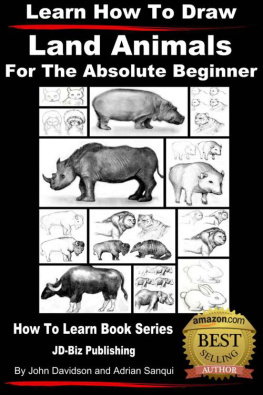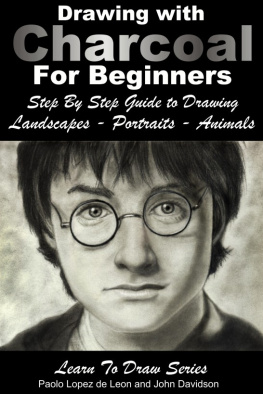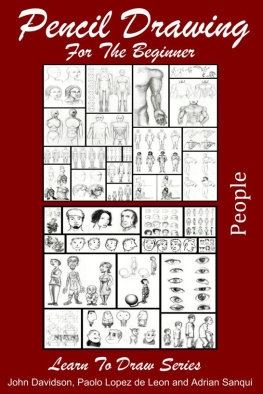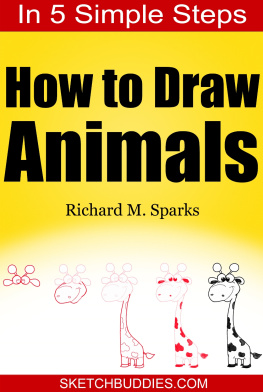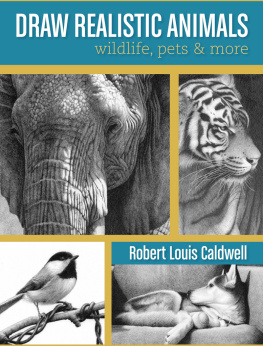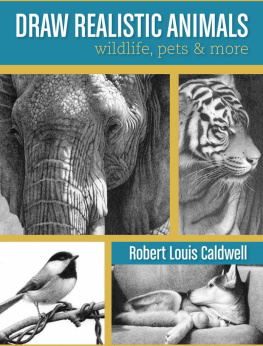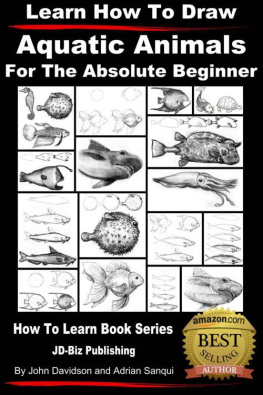John Davidson - Learn How to Draw Land Animals - For the Absolute Beginner
Here you can read online John Davidson - Learn How to Draw Land Animals - For the Absolute Beginner full text of the book (entire story) in english for free. Download pdf and epub, get meaning, cover and reviews about this ebook. year: 2013, publisher: JD-Biz Corp Publishing, genre: Home and family. Description of the work, (preface) as well as reviews are available. Best literature library LitArk.com created for fans of good reading and offers a wide selection of genres:
Romance novel
Science fiction
Adventure
Detective
Science
History
Home and family
Prose
Art
Politics
Computer
Non-fiction
Religion
Business
Children
Humor
Choose a favorite category and find really read worthwhile books. Enjoy immersion in the world of imagination, feel the emotions of the characters or learn something new for yourself, make an fascinating discovery.
- Book:Learn How to Draw Land Animals - For the Absolute Beginner
- Author:
- Publisher:JD-Biz Corp Publishing
- Genre:
- Year:2013
- Rating:3 / 5
- Favourites:Add to favourites
- Your mark:
Learn How to Draw Land Animals - For the Absolute Beginner: summary, description and annotation
We offer to read an annotation, description, summary or preface (depends on what the author of the book "Learn How to Draw Land Animals - For the Absolute Beginner" wrote himself). If you haven't found the necessary information about the book — write in the comments, we will try to find it.
Adrian Sanqui and John Davidson
TABLE OF CONTENTS
Introduction: Drawing tools
Sketching Animals
The contour shape
The planes
Details
Furs
Raccoon
Lion
Bison
Texture
Armadillo
Elephant
Prints
Tiger
Shading
Linear shading
Imaginary light source
Tapir
Smeared shading
Hippopotamus
Rhinoceros
Gaur
Sketching Animals - The contour shape
To properly construct the figure of any subject you want to illustrate, observe the structure of its form and find what kind of shape that can resemble its body structure.
The idea is to have a basis for portraying the mass of the figure. The basic shapes can be easily positioned upon your desired perspective or point of view.
Obtain the most basic form of the animal you are going to draw.
Use the basic form as a reference for constructing the main outline.
The main outline is the most important element for the subject to be distinguishable. Remember that the basic figure (basic shapes) is mainly a basis for its mass in the simplest form, this is just a way for you to see the subject as a multidimensional figure, and any change in position will gradually change the manner of how the figure should be outlined.
The primary outline may overlap, replace, or replicate the basic figure.
If the portions of your animal are smoothly spherical (circles used to simplify the form), then the primary outline would simply overlap or replicate the simplified form, but if the part has ridges such as the face of the animal (nose, eyeholes, cheeks etc...) then the basic form should be modified to illustrate the exact shape of the head.
The basic forms will be your guide to properly lay out each linear shade.
Observe the first sphere. The linear shades do not bend properly with the contour shape but it can show the dimensions by leaving the center of the sphere unmarked. These are hatches that use the point of light as a reference.
The linear shades on the second sphere bend with the contour shape of the figure. The lines show the proportions by interpreting the form by flowing with it. These hatches use the point of light and the manner of its bend to show dimensions.
If you are going to use a single set of hatches to shade the subject, use the method of the second sphere, and then use the method of the first sphere to darken and enforce the visual depth.
Thin and light linings are used to portray the dimensional shape. Follow the contour figure of the basic form to properly portray the shade values according to its perspective
John Davidson: author's other books
Who wrote Learn How to Draw Land Animals - For the Absolute Beginner? Find out the surname, the name of the author of the book and a list of all author's works by series.

